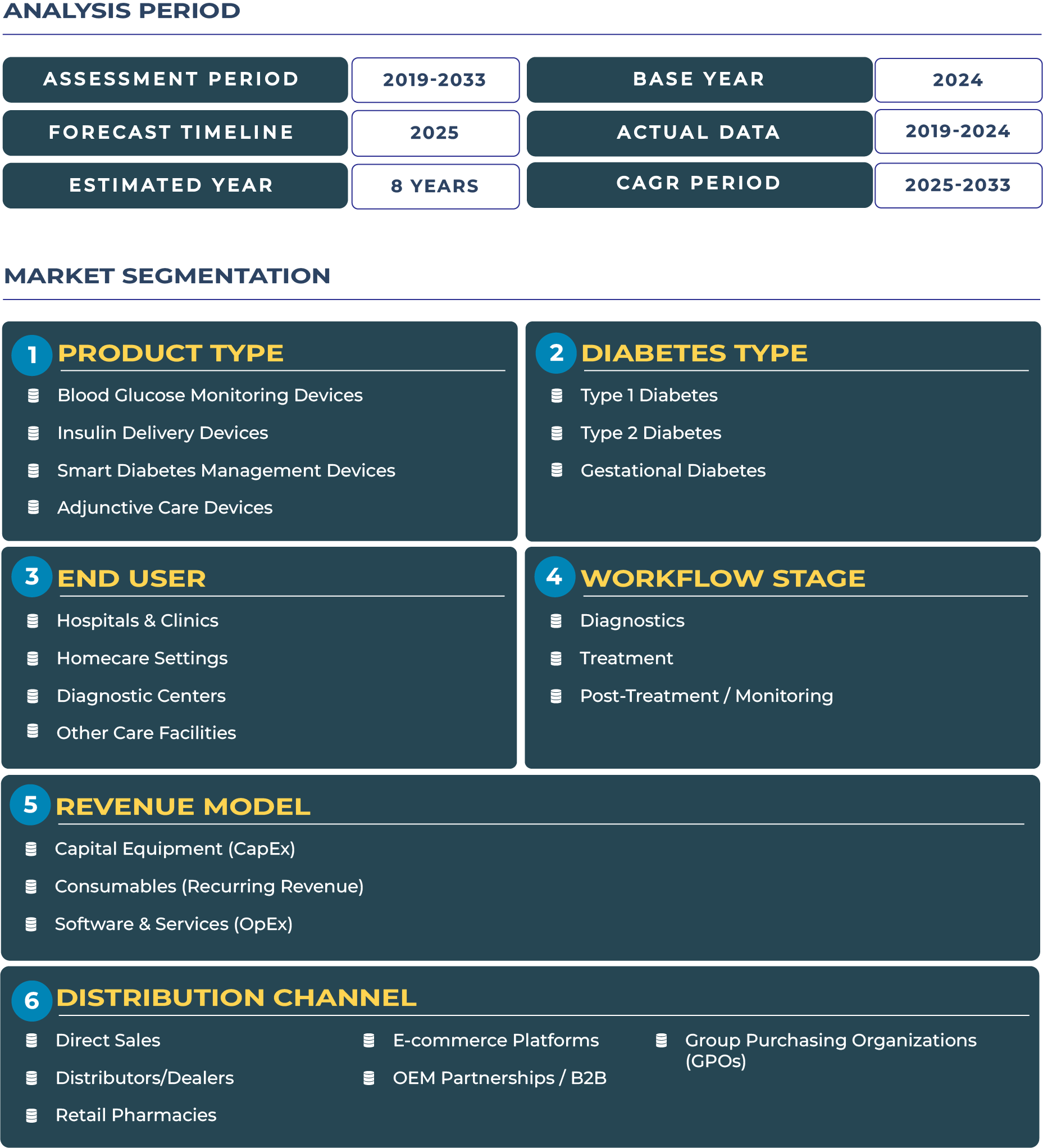Oman Diabetes Care Devices Market Outlook: Why Government Tender Selectivity is Driving Steady Growth in the Oman Diabetes Care Devices Sector
The Oman diabetes care devices market is increasingly shaped by a selective government tendering model that provides medical device suppliers with reliable entry points into a relatively small but highly regulated ecosystem. By focusing on targeted tenders rather than broad-scale supply ambitions, international and local companies can secure baseline revenues while proving both price competitiveness and clinical efficacy. This strategy is critical in Oman, where the healthcare system is structured under Ministry of Health Oman oversight and where public procurement channels dominate the adoption of essential medical technologies. Selective government tenders provide proof-of-concept for innovative technologies such as continuous glucose monitoring systems (CGM) and insulin pumps, thereby establishing trust before wider distribution into private hospitals and specialty clinics.
The Oman diabetes care devices market is set to grow from USD 12.1 million in 2025 to USD 19.8 million by 2033, reflecting a steady CAGR of 6.3% from 2025–2033. Despite geopolitical uncertainties in the Gulf and the aftermath of global supply chain disruptions, Oman’s stable fiscal approach toward healthcare has created predictable opportunities for medical device suppliers. Selective tendering processes for glucose monitoring devices, insulin delivery systems, and smart diabetes management solutions ensure that only reliable and cost-efficient solutions secure government contracts. This creates a foundation for sustainable growth rather than volatile spikes in demand. Moreover, the public sector’s emphasis on preventive healthcare in line with Oman Vision 2040 ensures that diabetes management remains a national priority. The growing prevalence of diabetes and lifestyle-related disorders also acts as a structural driver for long-term adoption of advanced diabetes care technologies.
Drivers & Restraints: Balancing Stable Public Investments Against Market Size Limitations in Oman diabetes care devices Landscape
One of the key growth drivers of the Oman diabetes care devices industry is the resilience of healthcare expenditure within the broader Gulf Cooperation Council (GCC) framework. With steady public spending and targeted investments in non-communicable disease (NCD) programs, Oman continues to channel resources into modernizing diabetes care. Pilot programs supporting continuous glucose monitoring and smart insulin delivery devices have been rolled out in Muscat and other urban hubs, reflecting a government-led commitment to digital health adoption. Stable GCC healthcare investment patterns have further enabled Oman to participate in bulk procurement of essential diabetes management devices at competitive prices, ensuring equitable access across public hospitals.
Conversely, constraints in market expansion stem from the relatively small size of Oman’s healthcare market and budget limits in smaller governorates. Procurement constraints also hinder device adoption, as public tenders often prioritize cost efficiency over innovation. This can delay the availability of advanced technologies such as automated insulin pumps or AI-enabled diabetes apps. Additionally, reimbursement limitations in private healthcare settings create barriers for patients who may otherwise benefit from newer diabetes management tools. The combination of budgetary caution and procurement selectivity can slow down device penetration, particularly in remote and underserved regions.
Trends & Opportunities: Harnessing Public Pilots and Digital Health Integration to Shape the Future of Oman Diabetes Care Devices Industry
An important trend shaping the Oman diabetes care devices sector is the growing number of government-led health program pilots that test emerging solutions before full-scale adoption. These pilots, often initiated in Muscat and Sohar, focus on wearable continuous glucose monitoring systems and smart insulin pens. By leveraging small-scale testing, Oman’s health authorities ensure product safety and patient compliance before allocating larger tender budgets. Such initiatives provide device manufacturers with an opportunity to showcase reliability in real-world clinical environments.
The most significant opportunity lies in targeted public tenders that offer suppliers a steady baseline revenue. As the government selectively issues tenders for continuous monitoring devices, insulin delivery systems, and adjunctive care solutions, suppliers that demonstrate both affordability and clinical impact will gain long-term market positioning. Additionally, Oman’s increasing interest in telehealth platforms provides opportunities for integrating smart diabetes management devices with national e-health records. This creates a more connected healthcare ecosystem, ensuring broader access to monitoring solutions for both urban and rural populations.
Competitive Landscape: Selective Tender Wins and Regional Partnerships Redefining the Diabetes Care Devices Market in Oman
The competitive dynamics of the Oman diabetes care devices landscape highlight a blend of global leaders and local distributors. Companies such as Medtronic, Abbott, and Roche play an important role in introducing continuous glucose monitoring systems and insulin pumps into the country. These multinational players often participate in government tenders, emphasizing cost-effectiveness and reliability as competitive differentiators. In 2024, several tenders were awarded for glucose monitoring devices, reinforcing the role of selective procurement in shaping market shares. Local distributors in Oman complement these global suppliers by ensuring on-the-ground servicing and patient training, which are essential for building long-term credibility in the market.
Strategies in the Oman diabetes care devices sector increasingly focus on targeting selective government tenders with proven low-cost solutions. This approach ensures that companies establish baseline revenues while building credibility through performance in public healthcare systems. Partnerships with Omani hospitals and pilot programs also provide international firms with pathways to expand their market presence. Recent collaborations between government entities and global device suppliers have underscored the growing emphasis on selective procurement as a critical growth enabler.







